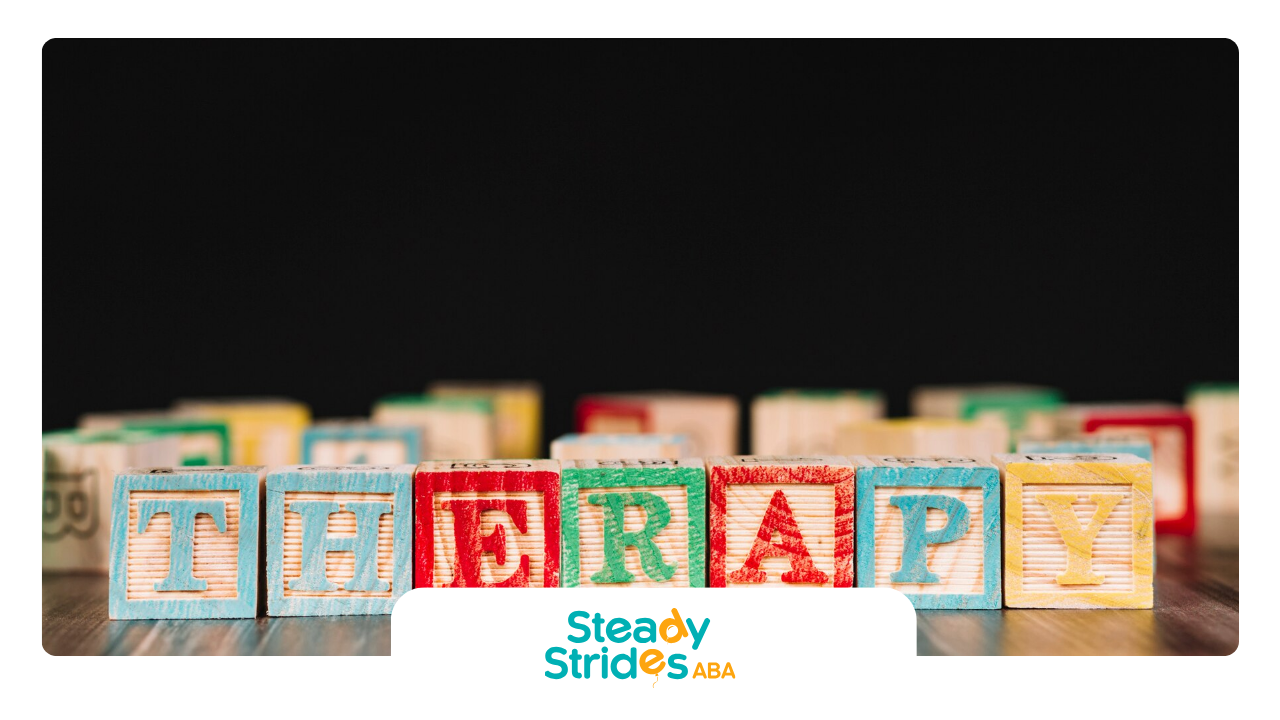Understanding Mild Autism
Overview of Mild Autism
Mild autism, sometimes called high-functioning autism, involves snags in social communication, repetitive actions, and being extra sensitive to sensory stuff. Folks with mild autism might have only small troubles with chatting and socializing. These folks often show unique quirks or hobbies that make them different from others whose main struggle is just with social chatter. Spotting mild autism's signs is key for parents, teachers, and health pros to offer the right help and get it.
Characteristics of Mild Autism
People with mild autism can show a bunch of traits that pop up differently in each person. You usually see these traits in three main spots: troubles with social chats, doing things repetitively, and being super sensitive to sensory stuff. Here's a table laying out what to expect with mild autism:
| Characteristic | Description |
|---|---|
| Social Communication Challenges | Trouble starting and keeping up conversations; has a hard time getting social hints like sarcasm or gestures. |
| Repetitive Behaviors | Getting stuck on repeating moves or speech; loves routines and resists shaking things up. |
| Sensory Sensitivities | Extra sensitive to sensory things like sound, textures, or lights; might dodge certain noises or feels. |
| Nonverbal Mix-Up | What It's Like |
|---|---|
| Lookin’ Away | Eyes might wander, dodging direct eye contact like it's too intrusive. |
| Gesture Cluelessness | Reading gestures, like nods, is as baffling as guessing a magic trick. |
| Facial Recognition | Faces aren’t giving away what moods and feelings are on the table. |
Tackling these hiccups needs bucket-loads of understanding, endless patience, and a plan that fits like a glove for each person. By giving the right nudge and support, families and teachers can help those with mild autism shine in the social light, boosting their chatting and bonding game. For a peek into autism diagnosis, don’t miss our piece on how autism diagnosis works here.
Behavioral Patterns
Getting a handle on the actions and habits tied to mild autism helps parents, teachers, caregivers, and professionals better connect with folks on the autism spectrum. These behaviors can show up in different ways and might shake up the everyday life of those involved.
Repetitive Behaviors
People with mild autism often fall into repetitive routines or actions. This could mean doing the same things over and over, like rocking back and forth, spinning around, flapping hands, or flickering fingers in front of their eyes. These actions often help calm them down by giving sensory input or managing feelings.
| Behavior Type | Examples |
|---|---|
| Motor Movements | Rocking, spinning, hand-flapping |
| Visual Stimuli | Flicking fingers, staring at moving objects |
Ritualistic Behaviors
Routines are big for those with mild autism. They often cling to familiar actions or strict routines to feel in control or make their world more predictable. Think of a kid who insists on eating the same meal every day or watches the same videos on repeat. Even small changes can make them upset, underscoring how much consistency matters.
| Ritualistic Action | Impact |
|---|---|
| Eating the same foods | Comfort in predictability |
| Watching the same videos | Preference for familiarity |
| Changes in plans | Upset or anxiety |
Self-Injury Signs
Sometimes folks on the autism spectrum might show behaviors that unintentionally harm themselves. This can look like hitting their head against things, biting their hands, or rubbing/scratching their skin too much. While it's tough for family members and caregivers to witness, these actions might be a response to stress, sensory overload, or even a way to communicate.
| Self-Injury Behavior | Possible Reasons |
|---|---|
| Head banging | Frustration or sensory overload |
| Hand biting | Seeking sensory input or relief |
| Skin rubbing | Response to anxiety or discomfort |
Spotting these behavior patterns is key to grasping the nuances of mild autism. By doing so, families and experts can collaborate to create supportive strategies. For more knowledge, dig into resources on autism spectrum disorder and high-functioning autism. Understanding these nuances can pave the way for targeted help and intervention for individuals with autism.
Strengths and Abilities
Folks dealing with mild autism, often linked with Level 1 Autism Spectrum Disorder, pack a bunch of strengths and skills that can light up their path to independence and success in different spots.
Coping Mechanisms
People on the mild side of the autism spectrum often whip up smart ways to handle social situations and daily hassles. They might pick up tricks to blend in more easily with others, sometimes making their autism traits blend into the background. These strategies might involve picking up on others’ behaviors and setting up steady routines to keep things ticking smoothly in their lives.
| Coping Mechanism | Description |
|---|---|
| Masking | Mimicking social moves from buddies to fit in more easily. |
| Structured Routines | Crafting predictable daily schedules to keep anxiety at bay. |
| Visual Supports | Employing charts or calendars to make sense of tasks and timelines. |
These tactics help people tackle unique hurdles, be it in school or at work. It’s crucial for parents and teachers to get the hang of these mechanisms to create spots that nurture and enhance these skills.
Unique Strengths
Folks with mild autism often shine with strengths that can make a real difference in various fields.
While challenges might pop up, these strengths turn into solid gold in numerous settings.
| Strength | Description |
|---|---|
| Attention to Detail | Many autistic individuals are masters at spotting patterns and differences that others might miss. |
| Focus and Dedication | When they’re into something, their focus can be razor-sharp, leading to mastering that subject. |
| Logical Thinking | They often tackle problems with a solid and logical approach, helping in problem-solving and analysis. |
| Creativity | Many individuals with mild autism boast unique artistic skills or fresh ideas that make them stand out. |
People with low support needs can live richly, snag an education, and land jobs, especially in places that capitalize on their strengths. It's key for parents and pros to spot and nourish these special qualities. Getting a grip on mild autism traits can foster their growth and triumph.
Sensory Sensitivities
Sensory sensitivities play a big role in how folks with mild autism get through the day. They might feel things more intensely or less than others, affecting their comfort, how they act, and their emotional balance.
Sensory Experiences
People with mild autism often have unique ways of experiencing the world. They might be super sensitive or hardly notice different sensory inputs. If they're extra sensitive, sounds, lights, or textures can be too much for them; if they're not that sensitive, they might seek out sensory experiences or overlook them.
Here's a look at some common sensory reactions:
| Sensory Type | Hypersensitivity | Hyposensitivity |
|---|---|---|
| Auditory | Trouble with loud noises | Loving loud sounds |
| Visual | Bothered by bright lights | Loving visual displays |
| Tactile | Avoids certain textures | Enjoys feeling different textures |
| Olfactory | Overpowered by strong smells | Unbothered by odors |
| Gustatory | Picky about flavors | Drawn to strong flavors |
Making places comfy is key to helping those with these sensitivities feel less stressed.
Creating a Comfortable Environment
Setting up a sensory-friendly environment can make life a whole lot easier for those with mild autism. This means adjusting spaces to cut down on overwhelming feelings and creating soothing experiences. Here's how to make a cozy space:
- Turn Down the Volume: Add some cushions and rugs to keep sounds at bay. White noise machines can help tune out bothersome sounds.
- Light It Right:
Go for natural light when you can. Use warm LED bulbs instead of glaring fluorescents, and blackout curtains for overly bright rooms.
- Touch-Friendly Spaces:
Provide a variety of textures with soft fabrics and stress-relief toys, offering places where they can feel things safely.
- Keep Scents Gentle: Opt for mild, natural fragrances. Calming essential oils like lavender can be a good choice.
- Stick to Routines: Predictable routines can help ease anxiety. Visual schedules can reinforce these habits.
These changes can create a more welcoming environment for individuals with autism spectrum disorder and make daily life smoother. Family, friends, and teachers play a big part in building supportive spaces where people can feel at ease and succeed. For more insights, check out articles on high-functioning autism and autism diagnosis criteria.
Therapy Choices That Make a Difference
Helping folks with mild autism ain't always a walk in the park, but certain types of therapy are like a light at the end of the tunnel. Especially concentrating on communication, social skills, and managing feelings, these therapies work their magic. Let’s run through the main ones.
Speech Therapy
Speech therapy is like hitting the reset button for those with mild autism struggling with language. It's all about boosting how folks talk and get their point across, and not just with words; gestures count too! Depending on what a person needs, speech therapy might buddy up with physical and occupational therapy to lend a hand with getting through the day and motor skills. Because, ya know, everything's connected.
A speech therapist might help with:
- Getting the tongue around words better
- Filling up that word bank
- Polishing the way folks chat during social gatherings
ABA Therapy
If therapies were a popularity contest, Applied Behavior Analysis (ABA) therapy would snatch the crown. It's the MVP in autism treatment, teaching an alphabet soup of skills: communicating, buddying up, and easing those pesky behaviors. ABA talks math too, fine-tuning treatments to fit like a glove. By giving a pat on the back for good behavior, ABA paves the way to hitting those personal targets.
ABA therapy hones in on:
| Area of Growth | What's Cooking in ABA |
|---|---|
| Talking and Listening | Speech skills, both spoken and unspoken |
| Making Friends | Chit-chatting and hanging out skills |
| Taking Care of Themselves | Stuff they do daily |
| Feeling Their Feelings | Keeping emotions in check |
Cognitive Behavioral Therapy
Cognitive Behavioral Therapy (CBT) steps up for those wrestling with anxiety, repetitive habits, or the blues. It arms folks with life-hacks to keep calm and tackle worries. CBT trains the brain to ditch the bad vibes, making way for better emotional balance and behavior. It’s like having a mental toolbox to tackle life's hiccups.
CBT perks for autism peeps:
- Knowing what they're feeling
- Gearing up to handle tough times
- Taming nerves and stress
When people get the scoop on different therapy and support choices, families, educators, and experts alike can tune in better to the uniqueness of mild autism. The right help can work wonders in chattiness, buddies-making, and emotional comfort. Hop aboard the therapy train and watch as it steers towards brighter futures.
Diagnosis and Intervention
Identification Challenges
Spotting mild autism can be like finding a needle in a haystack, but it’s crucial. We're talking about folks with Level 1 Autism Spectrum Disorder (ASD) here, where signs aren't always flashing neon. These folks can often hide their traits under a layer of learned behavior, making it a bit tricky for early intervention screenings to catch and leading to later diagnoses.
People with mild autism might find themselves floundering in social waters, struggling to hold social interaction oars, read social cues, or understand the subtle dance of body language and facial expressions. These challenges often sneak under the radar during assessments. Here’s why:
| Thing | What's Up |
|---|---|
| Masking | Folks might wear a mask to hide traits, blending in a bit too well. |
| Social Expectations | Girls can be the Houdinis of behavior, seen as shy rather than autistic. |
| Support Needs | Those who can manage on their own might slip through the net due to coping skills masking their need for help. |
Girls, in particular, often play the starring role in undiagnosed mild autism cases until later in life because of these factors. Teachers and parents need to keep an eagle eye out for subtle signs, especially in these girls who don’t fit the classic autism mold.
Tailored Interventions for Each Individual
When it comes to helping individuals with mild autism, one size doesn't fit all. You need interventions that fit like a glove, considering each person's traits and what they need help with. People with mild autism might ace their academics but flounder in social situations or face sensory overload. The game plan? Help them shine in communication and social skills while tackling sensory sensitivities and organization.
Here’s the playbook for success:
- Speech Therapy:
Helps folks find their voice, whether it's the spoken word or the silent cues of communication.
- Social Skills Training:
Offers a safe space to master the art of making friends and interpreting social signposts.
- Cognitive Behavioral Therapy (CBT): A trusty toolkit for managing worries and staying on top of everyday chaos.
Plus, for a more well-rounded approach, parents, and teachers should think about integrating autism diagnosis criteria into the mix. It's key to tailor support by listening to the person with autism because their input can fine-tune the intervention to a perfect pitch. By doing this, people with mild autism can flourish in school and social settings alike.
Even with these hurdles, folks with mild autism often have special skills and talents that boost their growth and happiness. It's worth noting that autism signs can shift between kids and grown-ups, making it vital to have flexible support and plans. Getting what makes mild autism tick helps families, teachers, and therapists create warm, supportive spots for growing individuals on the autism spectrum disorder.
Communication Challenges
Ever notice how chit-chat can be tricky? For folks with mild autism, it's like stepping into a wave without knowing how strong it is. So, let's talk about two big areas where communication sometimes wobbles: how people talk in social situations and how they use body language.
Pragmatic Language
Pragmatic language—it sounds fancy, but it's just the way we use words when we're talking with others. Think of it like this: when making small talk, someone with mild autism might feel like they're speaking a different lingo altogether. They might not catch on to social hints like if someone’s mad or happy just by their face or gestures.
You know how kids start babbling and then come out with their first words? Well, some folks with mild autism are a bit slower in this race or find the right words stuck somewhere deep. It can
make chit-chat or even regular chats with buddies pretty tough. It's helpful when parents and teachers spot these bumps on the road early on to offer a hand. Here's a quick look at a few tricky spots:
| Difficulties | What's It all About? |
|---|---|
| Social Hints | Struggle with getting what a raised eyebrow or a nod's about. |
| Yapping or Listening? | Kinda hard starting or keeping a talk going, feels like it's their turn all the time. |
| Talking in Turns | It's confusing to know whose turn it is to chat. |
Nonverbal Communication
Here's the deal with nonverbal stuff—it’s all about talking without words. People with mild autism often find reading body signs and facial moods a bit like deciphering a secret code. Making eye contact can be full-on awkward and they might rather keep their eyes elsewhere.
Missing these unspoken tips could mean missing the emotional memo in a group, kinda like feeling left out of the loop. For example, they might not catch on that their friend is upset through a frown, throwing a wrench in forming friendships. Getting the hang of nonverbal chats might just help them feel more connected and build stronger ties. Check out the usual suspects in nonverbal communication hiccups:












